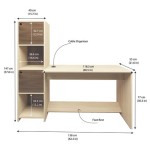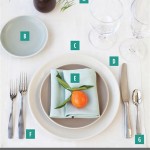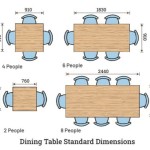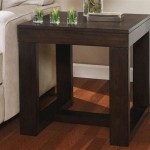Understanding Billiard Table Dimensions
Billiard tables, the centerpiece of countless recreation rooms, bars, and competitive arenas, come in various sizes. These dimensions are not arbitrary; they are governed by regulations, historical precedent, and the specific game being played. Understanding these dimensions is crucial for selecting the right table, optimizing playing space, and appreciating the nuances of the game.
The discussion of billiard table dimensions extends beyond mere length and width. It encompasses the relationship between these dimensions, the height of the table, the size of the playing surface, and even the precise measurements of the cushions and pockets. Each element plays a role in the playability and standardization of the game.
Standard Billiard Table Sizes and Their Applications
While custom-made billiard tables exist, standard sizes are prevalent in both casual and professional settings. These sizes are typically referenced by the length of the playing surface, measured in feet. The most common sizes include 7-foot, 8-foot, and 9-foot tables, each suited for different environments and levels of play.
A 7-foot table, often referred to as a "bar box" table, is the smallest standard size. Its dimensions are typically 3.5 feet wide by 7 feet long. This size is popular in bars, pubs, and homes where space is limited. While the smaller size may make certain shots more challenging for experienced players, it is well-suited for beginners and recreational play.
An 8-foot table strikes a balance between space requirements and playability. These tables measure 4 feet wide by 8 feet long. The slightly larger playing surface compared to a 7-foot table allows for more intricate shots and a greater challenge for players. Eight-foot tables are frequently found in homes and recreational facilities.
The 9-foot table, measuring 4.5 feet wide by 9 feet long, is the standard size used in professional tournaments and competitions. The larger playing surface provides ample space for complex shot sequences and requires a high level of skill and precision. This size is ideal for serious players and those seeking a competitive experience.
It's important to understand that these measurements refer to the playing surface and not the overall footprint of the table. The outer dimensions of the table, including the rails and frame, will be larger, typically adding several inches to both the length and width.
Key Dimensional Considerations Beyond Surface Area
Beyond the overall size of the playing surface, several other dimensional aspects significantly impact the playing experience. These include the height of the table, the size and shape of the pockets, and the properties of the cushions.
The standard height of a billiard table, measured from the floor to the top of the playing surface, is typically between 29.25 and 31 inches. This height is designed to be comfortable for players of average stature, allowing them to maintain a proper stance and stroke. Variations in height, even slight ones, can affect a player's ability to execute shots accurately.
Pocket size and shape are crucial elements that influence the difficulty of the game. Professional-grade tables often have tighter pockets than those found on recreational tables. This requires greater precision and reduces the margin for error. The opening angles and the depth of the pockets also contribute to the overall challenge.
Cushions, also known as rails, are made of rubber and are designed to provide a consistent and predictable rebound for the billiard balls. The profile and composition of the cushions directly affect the speed and angle of the ball's trajectory after it strikes the rail. High-quality cushions are essential for maintaining fair and consistent gameplay.
The nose height of the cushion, the point where the cushion meets the slate bed, is also a critical dimension. A correctly positioned nose height ensures that the ball rebounds accurately and predictably. If the nose height is too high or too low, it can result in inconsistent bounces and inaccurate shots.
Impact of Room Size on Billiard Table Selection
Choosing the right billiard table size is not solely dependent on personal preference or skill level. The size of the room in which the table will be placed is a crucial factor. Adequate space around the table is necessary for players to comfortably maneuver and execute shots from all angles.
A general rule of thumb is to allow at least 5 feet of unobstructed space around all sides of the table. This allows players to use a standard-length cue (typically 57 or 58 inches) without hitting walls or furniture. For players who frequently use longer cues or have limited space, shorter cues may be necessary, but this can affect their playing style and shot accuracy.
To determine the minimum room size required for a particular table, calculate the table's dimensions (including the rails) and add 10 feet to both the length and width. For example, a 9-foot table with outer dimensions of 5 feet by 10 feet would require a room that is at least 15 feet by 20 feet.
Consideration should also be given to other furniture and fixtures in the room, such as seating, lighting, and storage. These elements can further reduce the available playing space and should be factored into the overall room size assessment. Insufficient space can lead to frustrating gameplay and limit the enjoyment of the game.
Lighting is also a crucial aspect to consider when determining room size. The placement of the lighting fixture above the table should be optimal, and the room should be large enough to accommodate the required lighting without causing glare or shadows that can obstruct the player's vision. The lighting fixture should be positioned to illuminate the entire playing surface evenly.
Ultimately, the choice of billiard table size is a balance between personal preference, playing space constraints, and the intended use of the table. Careful consideration of these factors will ensure that the table provides years of enjoyment and enhances the overall playing experience.
Maintaining the proper dimensions and ensuring the table remains level are pivotal for consistent gameplay. Regular checks and adjustments may be needed to compensate for floor irregularities or shifts in the table's structure over time. Professional billiard table technicians can provide expertise in leveling and maintaining tables.
The materials used in the construction of the table also contribute to its overall dimensions and playability. The slate bed, typically made of three sections, must be precisely leveled and securely fastened to the frame. The thickness of the slate affects the table's weight and stability, impacting its resistance to movement and vibration during gameplay.
In conclusion, understanding the dimensions of a billiard table involves a comprehensive consideration of factors including the playing surface size, height, pocket specifications, cushion properties, and room size. These elements collectively contribute to the overall playing experience and the standardization of the game.
The precision in measurements, adherence to standards, and understanding the impact of each dimensional aspect all contribute to a better understanding of what makes a billiard table a worthwhile investment and a source of endless entertainment.

How To Measure A Pool Table 4 Dimensions

What Is The Standard Size Of A Pool Table Measurement Guide Room

Pool Table Room Size Calculator

What Size Room Will I Need For My Snooker Table Liberty

Pool Table Room Size Guide Chart Birkbeck Billiards

Supreme Pool Table Room Size Information

What Are Standard Pool Table Dimensions Workout Hq

How Tall Is A Standard Pool Table Height Guide Bar 101

What Is The Ideal Room Size For A Pool Table Use Our Calculator Home Billiards S

Pool Table Room Size Guide Home Leisure Direct








